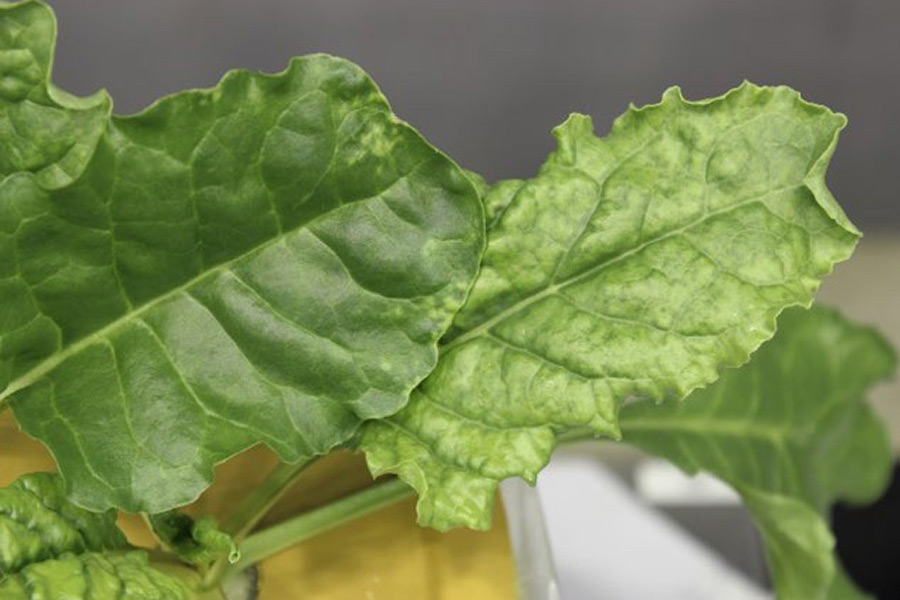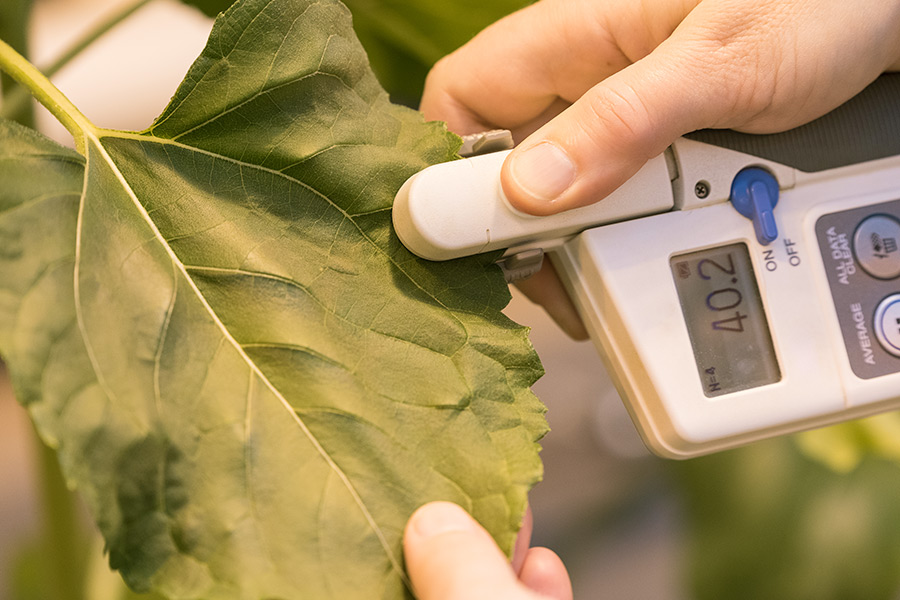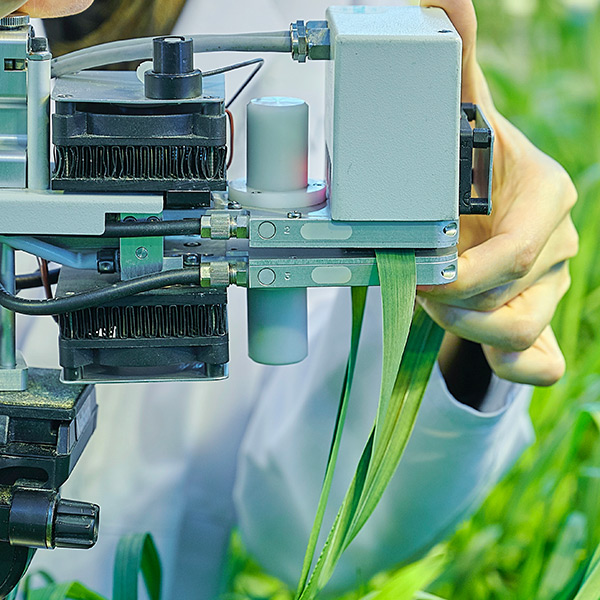Research
Magnesium (Mg) is essential for the synthesis of chlorophyll, and it is known that when there is a Mg deficiency, the chlorophyll concentration in plants decreases. The activity of the enzyme responsible for the insertion of Mg into the chlorophyll molecule, Mg chelatase, depends on the concentration of the available Mg. Hence, chlorophyll synthesis is decreased in case of Mg deficiency.
However, depending on the Mg uptake and status of the plant, young growing leaves show no decrease in chlorophyll concentrations, while old leaves show symptomatic chlorosis and reduced chlorophyll concentrations. This effect can be attributed to the remobilization of Mg and its translocation from old leaves to young leaves, causing a decrease in Mg concentration in old leaves first. Degradation of chlorophyll is believed to be a strategy to release Mg when the concentration of Mg in the plant is insufficient.
In order to understand in more detail how translocation processes affect the chlorophyll synthesis and degradation in different leaves, an experiment was carried out to investigate whether reduced chlorophyll concentrations in old leaves are a result of degradation (Mg relocation) or impaired biosynthesis (insufficient Mg concentrations) of chlorophyll. For this purpose, the chlorophyll biosynthesis and its degradation products in young and old leaves were investigated.










